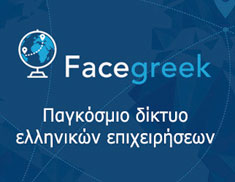This monastery is located in a gorge, among cypress and pine trees. It was built in 1270 A.D. and despite the fact it has been destroyed many times, it is now an astonishing monument and a Museum of Byzantine Art.
The first owner of the Monastery was Ioannikios who served as a Bishop. An expansion of the temple took place in 1300 A.D. by his nephew, Ioakim the Bishop, who built the Catholic Church (which you can still see nowadays), the place where the monks had their meal as well as the high walls that can be found all around the monastery. In 1332 A.D. commander in chief Domestichos became the revenue commissioner and was later succeeded by Emperor John Kantakouzenos. At that time and by imperial decree the monastery was named patriarchal. In 1345 A.D. the monastery suffered extensive damage from the invasion of Serbs and for the sake of Helen, the wife of Serbian Krali Stephen Dushan, the monastery was spared its complete destruction. In 1371, before the final conquest of Serres by the Turks, the monks extracted from Murad the First an arrangement based on which the Monastery was exempt from land tax. After the fall of Constantinople, Patriarch Gennadios Scholarios became a monk and stayed until his death in this monastery (1457-1462). His tomb is located near the tombs of the two founders. In 1854 his relics were relocated and are currently kept in a special ark. In the mid-18th century the monks abandoned the communal life due to lack of financial resources.
Serious drawback to the monastery was the looting of the library in July 1917 by the Bulgarians. What was stolen was sent to Bulgaria: Captive monks, 24 gospels, 200 rare manuscripts, 1500 old books, 100 handwritten volumes, four golden seals of the Byzantine Emperors, 5 patriarchal sigils and many other valuable and sacred objects. With the Treaty of Neuilly, some manuscripts were returned and can probably be found in the National Library of Athens, while a large number remains in Sofia. These valuable objects are kept in the monastery library in the Tower of the Southwest corner of the wall surrounding the monastery. The main church of the monastery is made of stone and is preserved till nowadays. The church is a monument of Byzantine painting and the frescoes of the interior are attributed to Macedonian hagiographer Panselinos (=Full Moon in Greek). The oldest of the murals are those which were made while Ioakim (the second Bishop of the monastery) lived in the place and are well known for their expressiveness, realism and passivity. The iconostasis is carved and dates back to 1804. On the right and the left there are images of Christ Pantocrator and the Virgin Odegetria (=Guide in Greek) and along with the first frescoes, they represent the peak of the Palaiologos dynasty.
Thousands of people visit the monastery as it is considered a treasure of artistic and historical value. In 1986 a sorority started living there and in cooperation with the 12th Ephorate of Byzantine Antiquities of Kavala they have undertaken the restoration and maintenance of the monastery.



